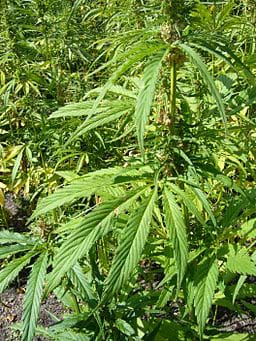Quick Look
Grade Level: 5
Time Required: 1 hour
Expendable Cost/Group: US $0.00
Group Size: 3
Activity Dependency: None
Subject Areas: Earth and Space

Summary
Students investigate a variety of plants and animals common to the Amazon by conducting research. They determine the plant or animal characteristics that make them edible or useful for the trip and learn to categorize them by comparing similarities and differences.Engineering Connection
Engineers use critical thinking skills to identify what criteria are important for success and what criteria are not important. Then they make design decisions based on these criteria.
Learning Objectives
- Conduct a scientific investigation.
- Research various plants and insects common to the Amazon rainforest.
- Use data to construct a reasonable explanation.
Educational Standards
Each TeachEngineering lesson or activity is correlated to one or more K-12 science,
technology, engineering or math (STEM) educational standards.
All 100,000+ K-12 STEM standards covered in TeachEngineering are collected, maintained and packaged by the Achievement Standards Network (ASN),
a project of D2L (www.achievementstandards.org).
In the ASN, standards are hierarchically structured: first by source; e.g., by state; within source by type; e.g., science or mathematics;
within type by subtype, then by grade, etc.
Each TeachEngineering lesson or activity is correlated to one or more K-12 science, technology, engineering or math (STEM) educational standards.
All 100,000+ K-12 STEM standards covered in TeachEngineering are collected, maintained and packaged by the Achievement Standards Network (ASN), a project of D2L (www.achievementstandards.org).
In the ASN, standards are hierarchically structured: first by source; e.g., by state; within source by type; e.g., science or mathematics; within type by subtype, then by grade, etc.
International Technology and Engineering Educators Association - Technology
-
Identify and collect information about everyday problems that can be solved by technology, and generate ideas and requirements for solving a problem.
(Grades
3 -
5)
More Details
Do you agree with this alignment?
State Standards
Colorado - Science
-
Each plant or animal has different structures or behaviors that serve different functions
(Grade
2)
More Details
Do you agree with this alignment?
-
Create and evaluate models of plant and/or animal systems or parts
(Grade
5)
More Details
Do you agree with this alignment?
-
Define and distinguish between matter and energy, and how they are cycled or lost through life processes
(Grades
9 -
12)
More Details
Do you agree with this alignment?
Materials List
Each gr oup needs:
- 3-4 notecards
- Amazon Rainforest Pamphlet
- 3-4 library books about the Amazon rainforest
- 2 poster boards (or one per student)
- art supplies, such as scissors, markers, paper
Worksheets and Attachments
Visit [www.teachengineering.org/activities/view/csm_amazon_lesson4_activity1_tg] to print or download.Introduction/Motivation
See the Storyline in Lesson 4.
Procedure
- The first step in this activity is to take the class to the library where you may want to read the scenario and then ask the groups to make a notecard (one per student or as the teacher sees fit). The questions on the worksheet are designed to encourage brainstorming and possible ideas for the poster presentation. You may want to discuss them as a class after students have finished gathering information.
- Below is a list of books you may suggest to students or have in the classroom to aid in their research. Encyclopedias and the Internet are also good resources.
Suggested Books: Piranhas and Other Wonders of the Jungle by Q.L. Piere; The Great Kapok Tree by Lynne Cherry; Nature's Green Umbrella: Tropical Rainforests by Gail Gibbons.
- Make sure each student has identified his/her own organism to research and present to the class.
- Either have each group present its organisms on one poster, or have students each do a poster for his/her organism.
- It is suggested to split up the presentation sessions into two 30-45 minute intervals. Display the final products around the classroom to help create an Amazon rainforest environment.
Assessment
Worksheet: Have each group complete and hand in the worksheet. Review their answers to gauge their depth of comprehension.
Subscribe
Get the inside scoop on all things TeachEngineering such as new site features, curriculum updates, video releases, and more by signing up for our newsletter!More Curriculum Like This

Students are introduced to the (hypothetical) scenario in which they are a team of EnviroTech engineers returning to the U.S. from a conference in Brasilia, Brazil. When their plane crashes deep in the Amazon forest, they work in groups to overcome various obstacles in their quest to reach help as q...

Students investigate edible plants and insects in the Amazon as part of the "Lost in the Amazon" hypothetical scenario. They research plants and insects to identify characteristics that make them edible or useful for human survival.

Students engineer a method for cleaning water, discover the most effective way to filter water and practice conducting a scientific experiment. Through this activity and its associated lesson, student teams follow the steps of the engineering design process related to water treatment, as done by pra...
Copyright
© 2013 by Regents of the University of Colorado; original © 2005 Colorado School of MinesSupporting Program
Adventure Engineering, Colorado School of MinesAcknowledgements
Adventure Engineering was supported by National Science Foundation grant nos. DUE 9950660 and GK-12 0086457. However, these contents do not necessarily represent the policies of the National Science Foundation, and you should not assume endorsement by the federal government.
Last modified: May 25, 2017








User Comments & Tips